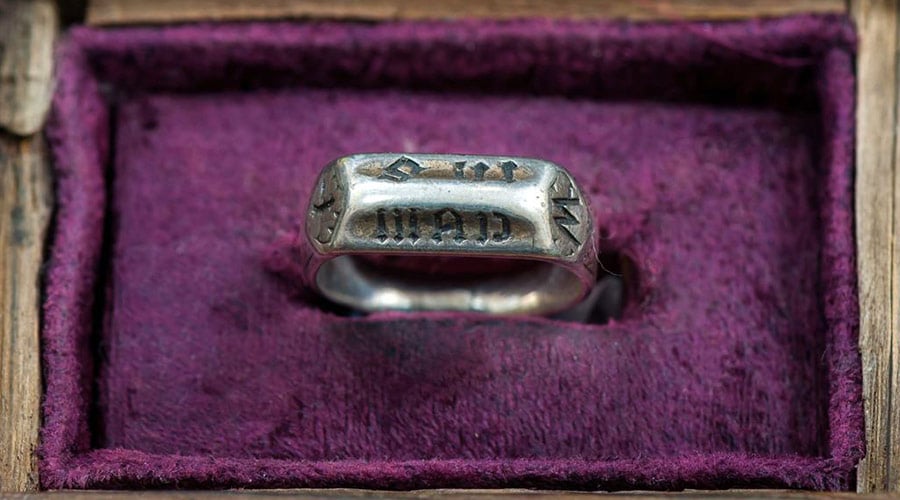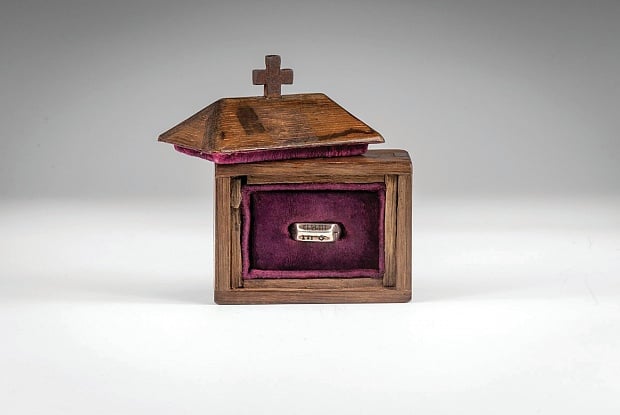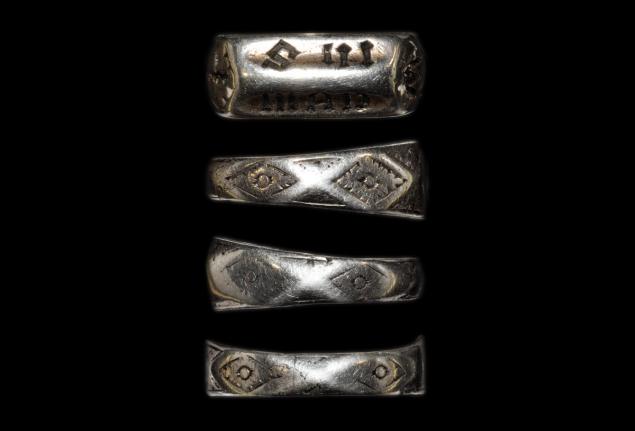Analysis
Joan of Arc’s Ring Spurs Battle Between French Theme Park and English Watchdog
The $425,000 auction of the artifact has hit a snag.

Photo: courtesy TimeLine Auction.
The $425,000 auction of the artifact has hit a snag.

Sarah Cascone

Last month, a silver ring believed to have been owned by Joan of Arc was hammered down at nearly £300,000 (about $425,000) at London’s TimeLine Auctions. Given the hefty sale price, the buyer, a historically-themed French amusement park, could be forgiven for claiming victory after the unexpectedly-heated bidding war. (Pre-sale estimates were just £10,000–14,000 [about $14,120–19,760]).
Instead, a new battle over whether the relic can be legally exported, looks poised to begin, report the Art Newspaper and the Times of London. Though the ring has already returned to its native France, where the Puy du Fou theme park has planned a March 20 ceremony to celebrate its acquisition, the British authorities may soon be calling for its return.
The UK has strict guidelines for exporting items of national and historical importance, and requires a license for any antiques that are worth more than £39,219 and have been in the country for more than 50 years.

Joan of Arc’s ring, which was sold with this antique oak reliquary casket.
Photo: courtesy TimeLine Auction.
The ring matches the description of one that Joan was questioned about during her fateful 1431 trial, where she was found guilty of heresy and burned at the stake. It was created around 1400, and given to Joan by her parents as a first communion gift.
After Joan’s death, Cardinal Henry Beaufort, who was present at the execution, took the ring back to England, where it has remained for nearly 600 years, handed down through the generations by the Dukes of Portland. It changed hands several times in the 20th century, and most recently belonged to Robert Hasson, who inherited it from his father James, a collector who served as a consultant for Christie’s on Italian Renaissance art. He had bought the ring at Sothbey’s in 1947 for £175 (about $700).
“My earliest memory of it was when I was about four years old when my sister was wearing the ring and her and I reenacted the battle when the British defeated Joan of Arc and captured her,” recalled Hasson in a video produced by TimeLine.
Puy du Fou reportedly only learned of the February 26 sale two days before, and were able to raise the necessary funds for the pricey purchase from donors over just 36 hours.
“We handed over the ring to the buyer’s solicitors in London on 3 March,” TimeLine managing director Brett Hammond told TAN. “We also gave them a letter, which they signed for, advising them that the ring would need a UK export licence.” Theme park spokesperson Gaëtan Favreau told TAN that the ring “probably has an export licence.”
Official guidelines state the wait for an export license “will normally be 28 working days.” Often, officials will delay granting a permit for nationally-significant objects in order to give a prospective British buyer the chance to match the purchase price and keep it in the UK.

Joan of Arc’s ring.
Photo: courtesy TimeLine Auction.
Last month, an export ban was imposed on Alberto Giacometti‘s Femme, the only plaster work by the influential Swiss artist in the UK. Works recently saved for the nation include an Anthony van Dyck self portrait purchased by the National Portrait Gallery.